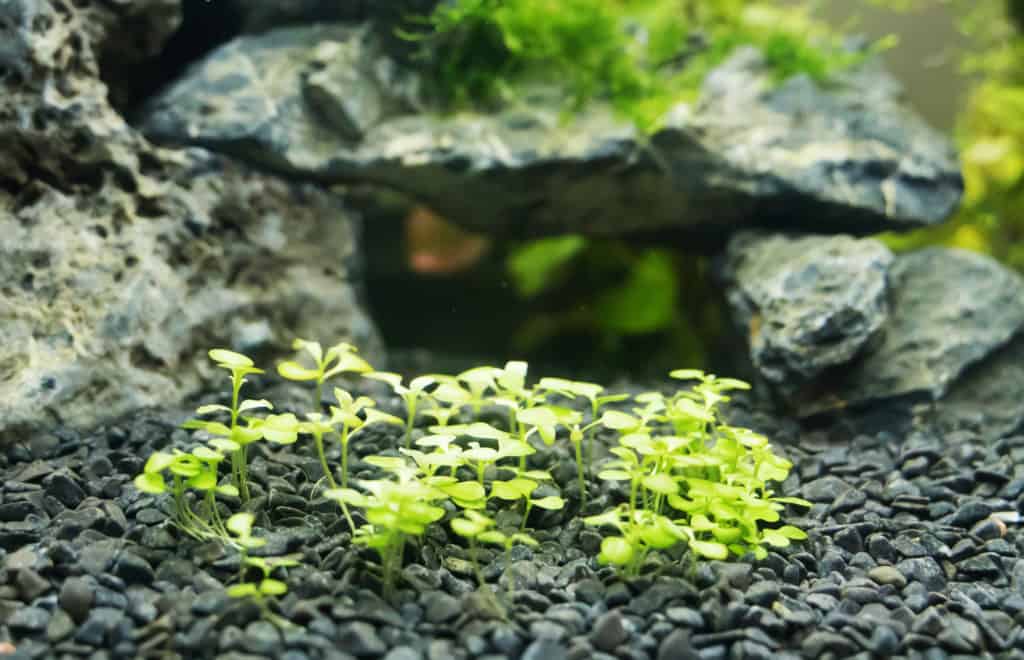Dwarf Baby Tears Without Co2
Dwarf baby tears are one of the most popular and sought-after aquarium plants in the world. They are not only beautiful, but they also offer a range of benefits to aquariums, including oxygenation and water filtration. However, many aquarists are hesitant to add dwarf baby tears to their tanks because they require carbon dioxide (CO2) injection, which can be expensive, time-consuming, and difficult to maintain. But, worry not, you can still enjoy the beauty and benefits of dwarf baby tears without CO2 injection.
Pain Points of Dwarf Baby Tears without CO2
Adding CO2 to your aquarium can be complicated, time-consuming, and expensive. This can discourage many aquarists from adding plants to their tanks, as they believe that the plants won't thrive without CO2 injection. This can limit the aesthetic options and biological benefits of the tank, leading to a less enjoyable aquarium experience for both the aquarist and the inhabitants of the tank.
The Target of Dwarf Baby Tears without CO2
Dwarf baby tears without CO2 are an excellent option for aquarists who want to add plants to their tanks without the hassle and expense of CO2 injection. These plants can still thrive in low-tech tanks, bringing beauty and benefits to the aquarium without the added stress of CO2 injection.
Main Points
If you want to add dwarf baby tears to your aquarium without CO2 injection, there are some things you need to know:
- Choose a suitable substrate - Dwarf baby tears need a stable substrate to anchor their roots. Choose a substrate that is rich in nutrients and has a small grain size.
- Provide the right lighting - Dwarf baby tears need bright light to thrive, so invest in an adequate lighting system if you don't already have one.
- Supplement with fertilizers - Without CO2 injection, you'll need to supplement your tank with fertilizers to provide the nutrients that the plants need to grow and thrive.
- Monitor and adjust - Keep an eye on the health of your plants and adjust as needed. This may include trimming, moving, or supplementing with additional fertilizers if necessary.
The Experience of Dwarf Baby Tears without CO2
When I first started keeping aquariums, I was intimidated by CO2 injection and didn't want to invest in the equipment. However, I still wanted to add plants to my tanks, so I decided to give dwarf baby tears a try without CO2. To my surprise, they thrived and added a beautiful, lush look to my tank. I learned that with the right substrate, lighting, and fertilizers, you can enjoy the beauty and benefits of plants in your aquarium without the added stress of CO2 injection.

Caring for Dwarf Baby Tears without CO2
When caring for dwarf baby tears without CO2 injection, it's important to choose the right substrate, lighting, and fertilizers. The substrate should be stable and nutrient-rich, with a small grain size to allow for proper root anchoring. Lighting should be bright and consistent, with an adequate amount of light reaching all parts of the plant. Fertilizers should be used to supplement the plant's nutrient needs and should be adjusted as needed based on the plant's health and growth.

Propagation of Dwarf Baby Tears without CO2
Propagation of dwarf baby tears without CO2 is possible, but it may take longer than with CO2 injection. To propagate, simply cut a section of the plant and anchor it in the substrate. It may take several weeks to see new growth, but be patient and monitor the plant's health to ensure that it's growing properly.
FAQs About Dwarf Baby Tears without CO2
Q1: Can you grow dwarf baby tears without CO2?
A1: Yes, you can grow dwarf baby tears without CO2 injection. However, you will need to provide the plant with a suitable substrate, lighting, and fertilizers to ensure proper growth and health.
Q2: What is a suitable substrate for dwarf baby tears?
A2: A suitable substrate for dwarf baby tears should be stable, nutrient-rich, and have a small grain size to allow for proper root anchoring.
Q3: What kind of lighting is best for dwarf baby tears?
A3: Dwarf baby tears require bright, consistent lighting to thrive. An adequate amount of light should reach all parts of the plant to ensure proper growth and health.
Q4: How do you propagate dwarf baby tears without CO2?
A4: To propagate dwarf baby tears without CO2, simply cut a section of the plant and anchor it in the substrate. It may take several weeks to see new growth, but be patient and monitor the plant's health to ensure that it's growing properly.
Conclusion
Adding plants to your aquarium can be a beautiful and rewarding experience, but CO2 injection can be expensive, time-consuming, and difficult to maintain. Luckily, you can still enjoy the beauty and benefits of dwarf baby tears without CO2 injection. By choosing a suitable substrate, providing the right lighting, and supplementing with fertilizers, you can create a lush and vibrant aquarium without the added stress of CO2 injection.
Gallery
Dwarf Baby Tears: Planting & Care Guide 2021

Photo Credit by: bing.com / planting
Dwarf Baby Tears (Hemianthus Callitrichoides) Care Sheet - Aquariadise

Photo Credit by: bing.com / callitrichoides hemianthus cuba aquariadise aquascaping seeds tweezers
Dwarf Baby Tears Or Baby Tears? I Bought Two Bunches Of What Was Sold

Photo Credit by: bing.com / dwarf
Dwarf Baby Tears Care Guide – Planting, Growing, And Propagation

Photo Credit by: bing.com / tears baby dwarf care planting propagation growing guide changed classification scientific follows belongs scrophulariaceae later its which family
Live Aquarium Plants: Dwarf Baby Tears | Hemianthus Callitrichoides

Photo Credit by: bing.com / tears baby dwarf care hemianthus aquarium plants water name callitrichoides live growing information angel